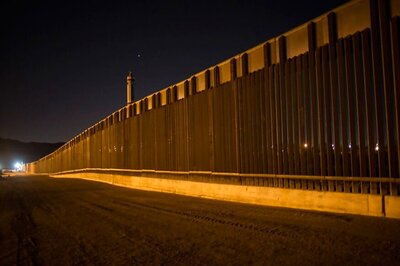
views
The South is a special place. For more reasons than one. Setting aside the emotional one, let me explore the rational argument. And please, for a start, let me clarify: this is no jingoistic comparison of region to region. Instead, it is a clear positioning of the potential of the four South Indian states of India at large. If there is any comparison attempted in number terms, it is merely to give a perspective to an otherwise dull number.
The South is an exciting place. It is home for a start to 251 million Indians. The sex ratio remains healthy. The total population number of the four South Indian states makes it a region that contributes 21 percent to the population of India. If our fertile young people out here work harder, we are going to maintain this number contribution on an even keel.
In terms of employment, the South is a robust environment. The South equally exports its people to literally every part of the world, just as the South attracts the best of talent from every nook and cranny of the world. To that extent the South has emerged a mixed market. What was once a language-centric domination of the local people, has given way to multiple sets of communities co-existing happily. You will find a Kenyan rubbing shoulders with a Bengali, just as you will find a Punjabi rubbing shoulders with a Kannadiga in Bangalore.
The lines of language are blurring, and the old jingoism of language is giving way to a more common adoption of Hindi as a national language. In more ways than one, Hindi is emerging the alternate language of every one of the Metros in the 4 South Indian states. This in turn, is ironing out the creases in consumption patterns of both media and brands and products and services alike.
If I am to look at it anecdotally, here is an example. It was a Sunday evening and auto-rickshaws on the streets of Bangalore were scarce. Every one of the registered 87,000 auto-rickshaws in the city seemed full. Waiting at the kerb-side, I heard a heated argument taking place between Hindi speaking auto-driver and Kannada speaking passenger. The auto-driver had gathered a big crowd around him. The passenger was shouting at him in Kannada, belting out choice expletives for not running the meter and demanding n excess fare. The auto driver was just harping on one point: "Sir, don't scold me in Kannada. This is India. Scold me. But scold me in Hindi!" The gathered crowd was totally with the plea of the auto-driver!
In terms of education, the South is an educated place. In many ways, the very lack of opportunity to work of yore, has by default made the entire region a place that encouraged education. The quality of education doled out by institutions in the South has made it emerge a veritable centre of excellence in higher education. Engineering, medical, management, technical and now even law and catering colleges of repute have positioned far flung towns in South India as magnet towns that attract students from all over the country and overseas as well.
Anecdotally, if you were heli-dropped at Vellore in Tamil Nadu, without knowing where you were, you would never know you are in the heart or liver or gizzard of Tamil Nadu. The same goes for Manipal in Karnataka, where the population of Manipal is as variegated as the population of India itself. Also, 92 per cent of this town is below the age of 25!
South India, extending that point of a young audience, is an attractive location for the young. The early end-to-end services boom happened in Bangalore and Hyderabad. These cities have emerged hubs for IT companies, Biotech firms and more. A whole ecosystem of employment opportunities has emerged in the South. Slapping Bangalore on a resume has become an important adjunct to a techie today. Never mind which part of the world you live in. Bangalore is a value-add.
The South in return has risen to the occasion and put up an excellent infrastructure in place. And many are in a project-stage. Hyderabad and Bangalore airports(in that order please) are rated among the best in the region. Bangalore has just kicked off its celebrated Metro rail system. Chennai and Hyderabad are already on work in this space. The IT campuses that dot the areas of Bangalore, Mysore, Mangalore, Hyderabad, Chennai, Coimbatore, Kochi and Trivandrum are exciting locations that resemble something transplanted from the concrete and steel and glass jungles of Manhattan. Mysore boasts of an Infosys Learning Centre that stupefies a visitor in its sheer scale and grandeur of effort.
Add to it as an icing on the cake the super-specialty hospitals of the South, and the South-side story is complete. Well nigh nearly! Well nigh nearly, because the South is still a work-in-progress region, and there is plenty to come.
In sheer terms of per capita income, which is a function of education, employment opportunities and indeed the competition that abounds to get jobs, the South is a special place as well. Tamil Nadu led the per capita income stakes for FY 2010 in the South with Rs 62,499. The per capita income of Kerala stood at Rs 59,179. Andhra Pradesh stood at a robust Rs 51,025. and Karnataka followed at Rs 50,676. This data needs to be seen in sync with the highs and lows in India, with Goa at the top with Rs 1,32,719 and Bihar bringing the rear with Rs 16,119.
The South is a fully-loaded consumptive location as well. Armed with per capita income that is robust, a media-exposure that is total and stable jobs that bring comfort, the South is a nice place to be if you are a marketer of a two-wheeler or a tank top for that matter. The market is wide open. Wide open to welcome ideas that are traditional and ideas that are modern as well.
The South is an exciting place to be. In sheer population terms this is a region of 251 million stomachs that put in 753 million plus meals in a single day. This is a region that drinks a lot of coffee and tea and beverages of every kind, cold and hot. That's 251 million bladders to feed every day! Even the market for hair-oil is big. We have 251 million heads. Half of them women. And women with an average length of hair that is all of 9.2 inches. Compare that with the average length of hair on a Chinese woman: 3.1 inches! The market for hair oil and the market for shampoo and 'shikakai' alike are that much bigger out here. Touche!
The South is a special place. Yes it is! Yes it is!
(The author is a brand-domain specialist. IBNLive, on the occasion of the state formation days in the South, is proud to launch IBN South.)


















Comments
0 comment